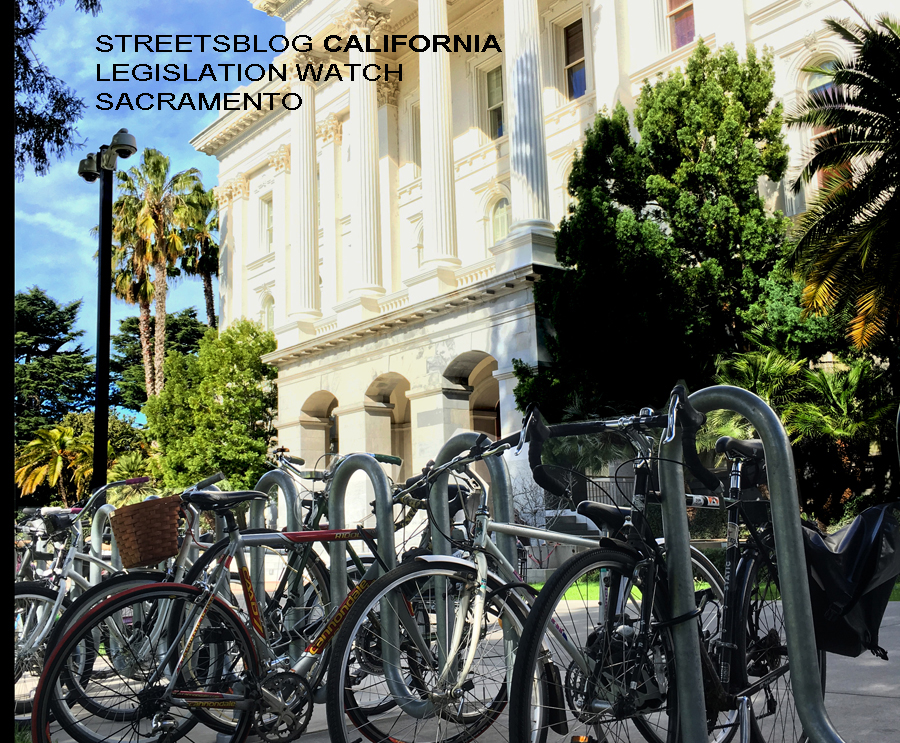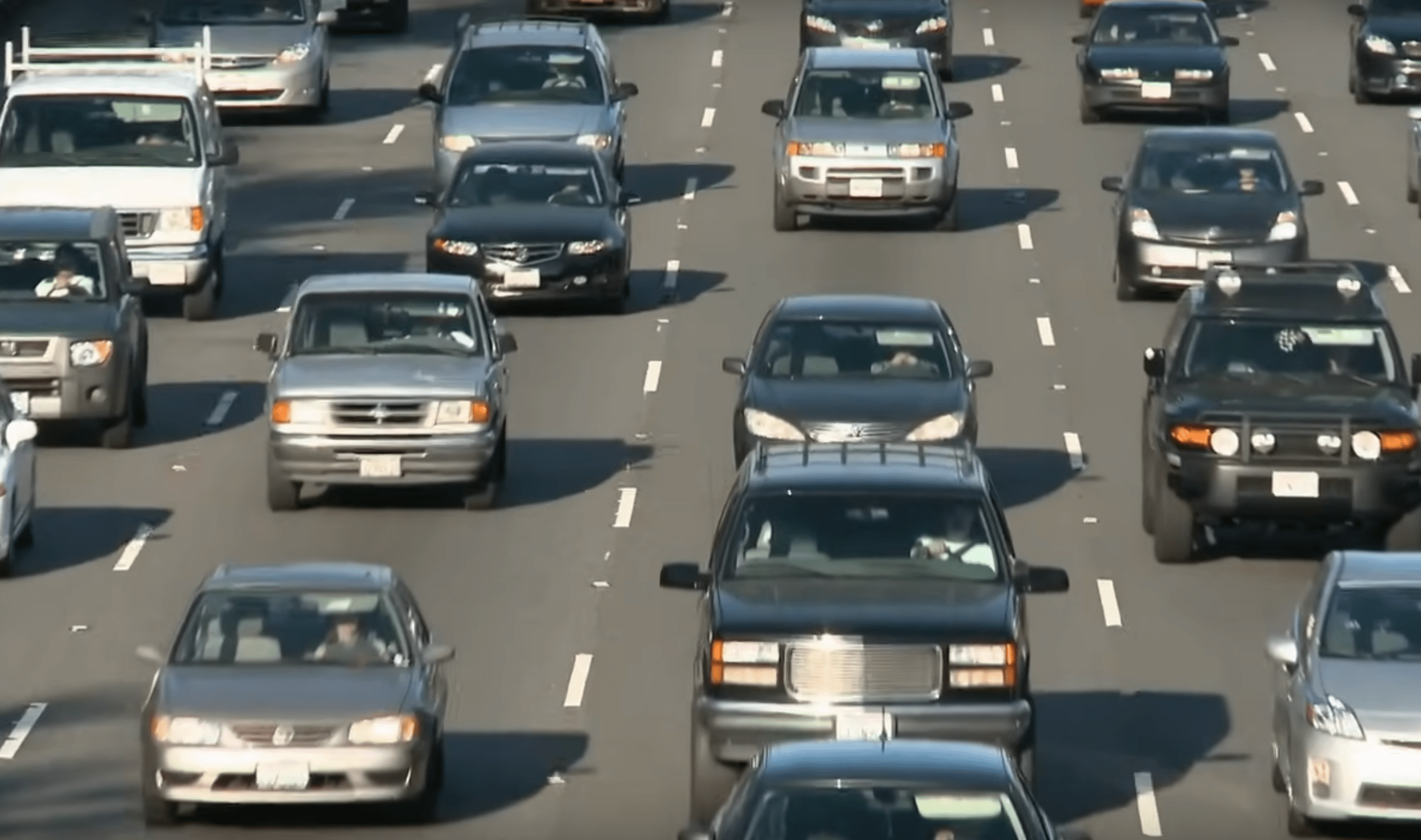Legislative Update: Complete Streets Move Forward, ATP Rejigger Fails
4:38 PM PDT on May 20, 2019

Note: GJEL Accident Attorneys regularly sponsors coverage on Streetsblog San Francisco and Streetsblog California. Unless noted in the story, GJEL Accident Attorneys is not consulted for the content or editorial direction of the sponsored content.
Among the bills that died or survived last week's Appropriations committee hearings were two key bills for people who walk, bike, or take transit. S.B. 127, Senator Scott Wiener's Complete Streets bill, had better success than his higher-profile housing bill, and it passed the committee. And S.B. 152, a bill from Senator Jim Beall (D-Campbell) which would have changed the structure of the Active Transportation Program, was held back.
Complete Streets for All Moving Forward
Senator Wiener's bill would require a number of things, including the creation of a branch within Caltrans to develop projects to increase bike and walk trips and keep track of bicycle and pedestrian facilities on state-run roads. But its main thrust is a requirement that Caltrans, when working on projects funded by the State Highway Operation and Protection Program (SHOPP), use the opportunity to improve conditions for pedestrians, bicyclists, and transit users. That could include traffic calming, road diets, better crosswalks--whatever is needed.
Who decides what is needed is key as well. The bill requires the creation of a project development team to include representatives from local communities, but it will ultimately be up to local residents to push for improvements that suit them.
There is also language in the bill about what kinds of facilities would satisfy its requirements, although at the moment it remains vague on that point. The danger is that could allow Caltrans engineers to slap down a sharrow on a busy road and call it "bicycle infrastructure."
Linda Khamoushian, Senior Policy Advocate for the California Bicycle Coalition, which is sponsoring the bill, is very aware of that gap. "We'd like some language to refer to adoption of guidelines like the new FHWA Bike Guide as a reference for engineers, or something similar," she said.
The SHOPP, which the bill focuses on, is supposed to be used for maintenance and repair of existing roads, and S.B. 127 would apply only to state-run highways that are not "limited-access" freeways. These are local streets and roads, like Van Ness Avenue in San Francisco, San Pablo Avenue through the East Bay, Santa Monica Blvd in Los Angeles County, California Street in Redding, 23rd and 24th Streets in Bakersfield, and Highway 1 through many coastal cities.
They are the roads about which local transportation planners say: "We can't touch that; it belongs to Caltrans, and they'll say no." If S.B. 127 passes--it now must pass on the floor of the Senate, and go through the Assembly committee process--they won't be able to say that any more.
The roads subject to the bill constitute a considerable portion of the state highway system, but Caltrans has not been forthcoming about what how big a portion that is. The department did, however, report to the Appropriations Committee that 145 of the 323 SHOPP projects in the current year's plan would be subject to the requirements of S.B. 127, at a cost of an estimated $3.8 million.
Does that sound like a lot? It is less than one-tenth of one percent of the total SHOPP budget of between $4 and $6 billion. These are annual budgets. Considering that even with the current nonexistent infrastructure in most cities, bike trips alone already constitute between one and two percent of commute trips. On top of that there are other bike trips, plus plenty of walking, transit, and multi-modal trips. Directing less than one-tenth of one percent of the SHOPP budget - meant to improve conditions for cars - towards the safety of other road users sounds like a bargain.
As the bill progresses, expect arguments about a few of its provisions. One would require the California Transportation Commission (CTC) to prioritize increasing safety for pedestrians and bicyclists and building bicycle and pedestrian facilities, which is sensible, but the CTC could push back. The bill also requires that any State Highway Account funds for safety improvements prioritize reducing fatalities and severe injuries, particularly for vulnerable road users including pedestrians and cyclists, and must not increase vehicle miles traveled. These are key provisions that underline the importance of the bill's overall gist - that the state must shift away from funding only car travel - but they are likely to attract some opposition.
Active Transportation Funding Rework Fails
Meanwhile, S.B. 152, authored by Senator Beall and sponsored by the Bay Area's Metropolitan Transportation Agency, was held back by the Appropriations Committee. It has been opposed by a variety of parties, who say it is unnecessary - and have called it a Bay Area cash grab.
Rural communities saw its reallocation of funds, giving a much larger portion of the Active Transportation Program (ATP) funding to regional governments, as an attack on their success in the statewide competition.
The CTC discussed the bill at its meeting last week, and the general message was: back off.
Maura Twomey, chair of the Rural Counties Task force, addressed the bill's immediate impact. "We are concerned that the bill, even as amended, significantly reduces the amount of funding that rural counties are eligible to compete for, and limits their ability to complete critical and transformative projects," she said.
"We are also concerned that the process has been divisive, pitting large agencies against small and rural agencies," she added. "We strongly believe that when the regional agencies work together as partners and stakeholders, we can resolve issues through collaboration and compromise, finding solutions that meet the needs of all counties."
Her words were backed up by Will Ritter, representing one of those large agencies, L.A. Metro. "We believe that the bill will reduce funding opportunities and sharply limit the ability to align [projects] with state goals and needs," said Ritter. The distribution formula called for by S.B. 152, which would allocate regions a share of ATP money based on their populations and allow each to decide how to spend it, "will greatly impede the ability to address funding to disadvantaged communities," he said.
"Metro generally supports efforts to make administrative processes faster and more efficient, including those of the ATP," he added. "We believe there are good opportunities to streamline within existing law and the CTC guidelines process. Overall the program and the excellent staff behind it have created a strong foundation to invest in bicycle and pedestrian safety and mobility, air quality, and health throughout the state, within a recognized framework that has fostered strong partnerships with active transportation stakeholders across the state."
The Commissioners themselves were no less upset. Commissioner Bob Alvarado said he was "a little bit perturbed" and that the bill was "heartbreaking... we're not even a year into [S.B. 1 funding going out] and we're already starting to fight about this."
"I'm ashamed that it actually came from the agency where I reside," he said, referring to the Bay Area. "There are two things this commission does well: allocate - I think fairly - and then we do some pretty good oversight," he said. "S.B. 152 circumvents both of those."
"We can amend and change guidelines; we can't amend and change statute," he added.
Commissioner Paul Van Konynenberg agreed, saying that "accountability and transparency are key bedrock components of this commission, and S.B. 152 undermines that."
Support for the bill had mostly come from the Bay Area, which hasn't competed well for recent statewide ATP funds, although they have done fine in past funding rounds. Some believe that it is more appropriate for the regions than the state to decide which projects are worth funding, and the bill would have taken away the state's current oversight of that process. But S.B. 152 didn't guarantee fairness or transparency--it included no specific requirements for regional governments to follow.
At the meeting, the commissioners had already decided to form an Active Transportation Task Force, consisting of Commissioners James Ghielmetti, Carl Guardino, Christine Kehoe, and Yvonne Burke. This was "in recognition of the importance of the topic" and their need to understand the program and its goals and issues better.
But important as the ATP is, it is tiny. As Dave Snyder of the California Bicycle Coalition put it, S.B. 152 is an "unfortunate spat over a small amount of funding."
"Even with the increase from [the new gas tax], the Active Transportation Program still represents less than two percent of all transportation funding, for walking and biking combined, and that's too small," he said.
"We look forward to working with your task force, and hope to find ways to make the ATP leverage more money, if not increase its size, in a way that is equitable," he added.
Extra wonky note: At the same CTC meeting, the final piece of the current ATP funding cycle was approved--the forty percent that goes to the Metropolitan Planning Organizations. If one knows how to look, the allocation announcement [PDF] reveals another, even deeper concern with S.B 152.
That is, the rules for federal vs. state funding are different, and many of the projects funded in the statewide competition are able to fulfill the state requirements but not federal requirements--at least, not without a lot of extra effort. If S.B. 152 had passed, it would have reduced the overall amount available in the statewide component, which would have changed the proportion of state vs. federal money and could have potentially required every project to meet federal as well as state regulations. That would very likely further discourage participation by smaller urban and rural areas, even though until this point they have done well under state rules.
This is all getting deep into the weeds, but suffice to say that particular bullet was dodged when the bill sank.
Follow Streetsblog California on Twitter @StreetsblogCal
Streetsblog California editor Melanie Curry has been thinking about transportation, and how to improve conditions for bicyclists, ever since commuting to school by bike long before bike lanes were a thing. She was Managing Editor at the East Bay Express, editor of Access Magazine for the University of California Transportation Center, and earned her Masters in City Planning from UC Berkeley.
Stay in touch
Sign up for our free newsletter
More from Streetsblog California
The E-Commerce Explosion is Making Roads More Dangerous
And can advanced technology stop the bloodshed?
No, L.A. City Does Not Always Add Required ADA Ramps During Resurfacing, But They Should
StreetsLA GM Keith Mozee "Any time we do street resurfacing, it is considered an alteration, which requires ADA ramps to be installed."
When it Comes to Federal Infrastructure Grants, Size Does Matter
Cities and municipalities with larger budgets and staff are more likely to win competitive federal infrastructure grants, the Urban Institute has found.
Update on Oakland DOT’s Lakeshore Protected Bike Lane Project
Public seems fairly positive and accepting towards the coming project. Let's hope it stays that way
Monday’s Headlines
How much time does driving - and paying for driving - take up? Second best safety fixes are better than none; High-speed rail station plans for Fresno; More




